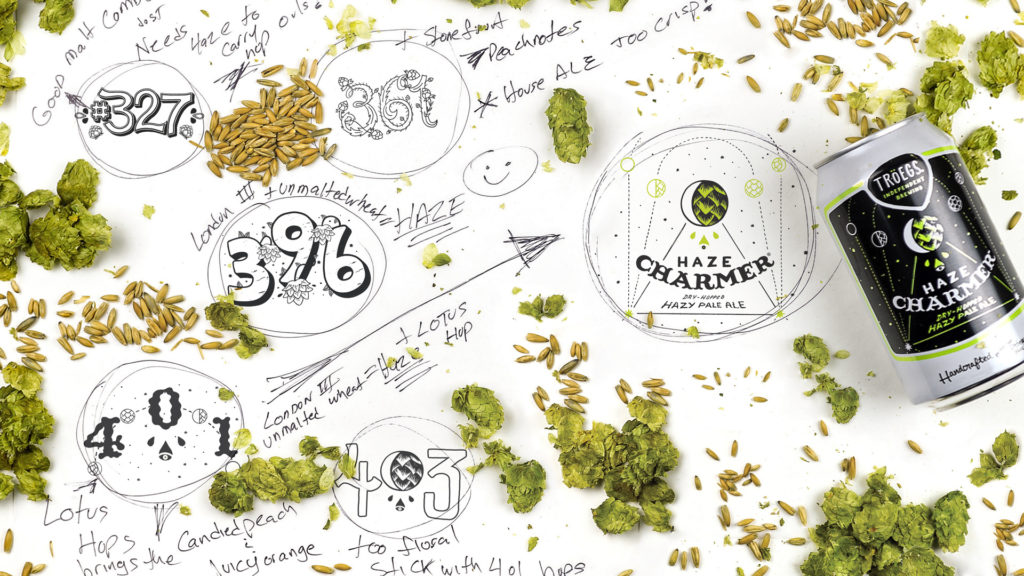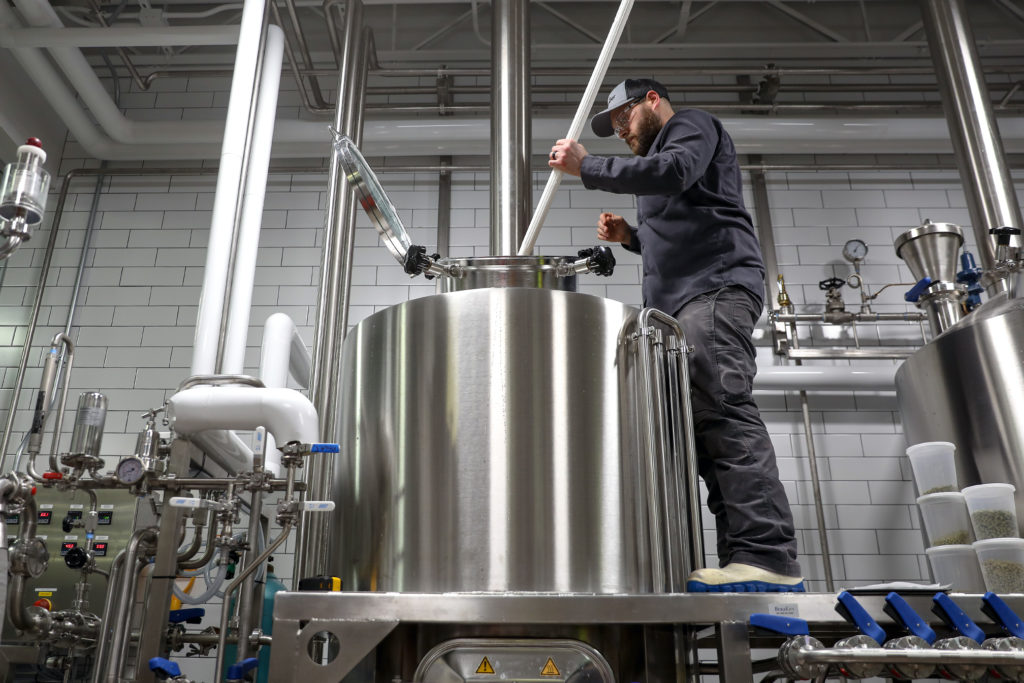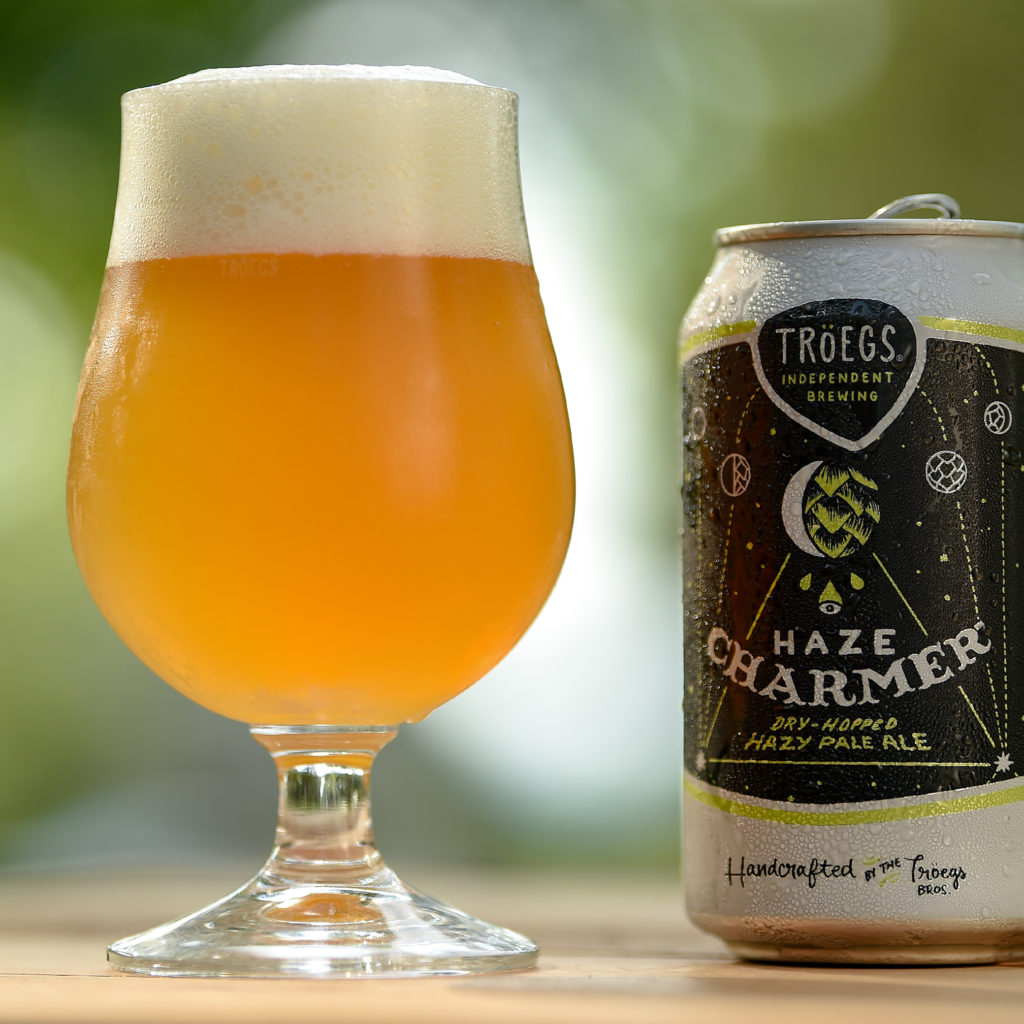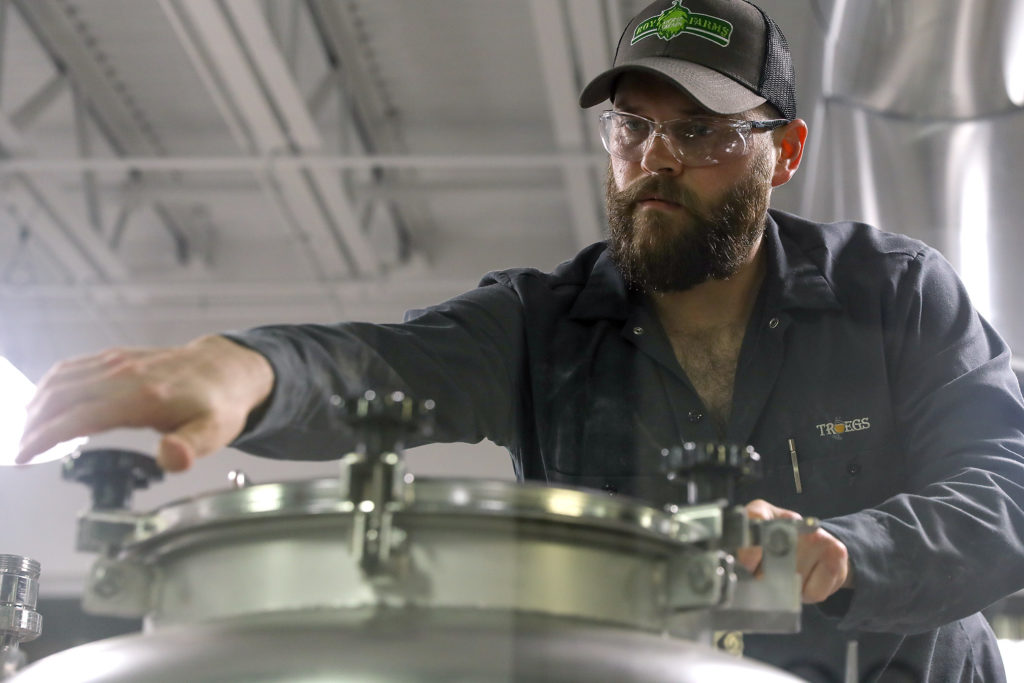We never know where an idea for the next beer will come from.
The recipe for Troegenator was born on a cold and rainy backpacking trip through Germany. Dear Peter was inspired by a local grove of nectarines that were damaged in a hailstorm. And our new year-round pale ale Haze Charmer started taking shape as we tinkered with the timing and temperature of hop additions.
As brewers, our radar for flavor is always on. And over the past 10 years in Hershey, we’ve been building our dream brewery to bring those flashes of inspiration to life.
The right tools
The latest addition to Tröegs is our Scratch Lab, a 3-barrel BrauKon system designed to replicate the temperature controls, pressure and geometry of our production brewhouse. It’s there where we do the work needed to understand the ingredients, techniques and flavors we are working with.
“With the Scratch Lab, we can break up 15-barrel brews into nano batches,” says our Brewing Manager Tim Mayhew. “That allows us to test things like dry-hop combinations and yeast strains side-by-side. We used to have to wait weeks between batches.”
Those test batches are analyzed by our Scratch Team – six brewers and scientists who spend hour after hour discussing recipes, likes and dislikes, and next steps. It’s not an uncommon sight to see one of them walking out the door at the end of the day with an armful of growlers. The line between work and play can get a little blurry.
“A big part of our job is tasting recipes we’re developing,” says Brewmaster John Trogner. “I have all sorts of notebooks filled with hop combinations, flavor profiles, mind maps and pictures. It’s funny, I never was a fan of homework … until now. For us, understanding the ‘why’ is fun.”
Haze Charmer
For our first new year-round beer in five years, we spent six months in R&D. The first step in the long and winding path to Haze Charmer was Scratch #327. That’s when we started experimenting with hopping at different temperatures to precisely disperse the flavor and aroma of the oils.
As we started to lock in the hop bill, we focused on the yeast. The London-3 strain we tried in Scratch #396 kept the beer dry and allowed the subtle malt and nut notes to come forward. On top of that, it changed the profile of the hops.
“More than ever, we dialed in the relationship between fermentation and the hop combination and how a yeast strain can fundamentally change the way you smell hops,” says John. “Brewing is all about the total picture, the overall relationship among the ingredients. As we tasted those early pilot batches and started to see the dynamics of that relationship, a lightbulb went on. It’s like finding a new color of the rainbow.”
With the hops and yeast in hand, we polished off the recipe with a mix of oats and wheat, creating a haze that props up the oils of Citra, El Dorado, Mosaic and Lotus.
“That combination of unmalted wheat and vigorous dry-hopping acts like a hop-oil delivery system,” says John. “It’s haze with a purpose.
After more than half a dozen small batches, we nailed the soft and sessionable pale ale we were after.
“Haze Charmer hits the sweet spot,” says John. “Big on hop flavor, low on bitterness. It’s been a fun ride perfecting this recipe.”




